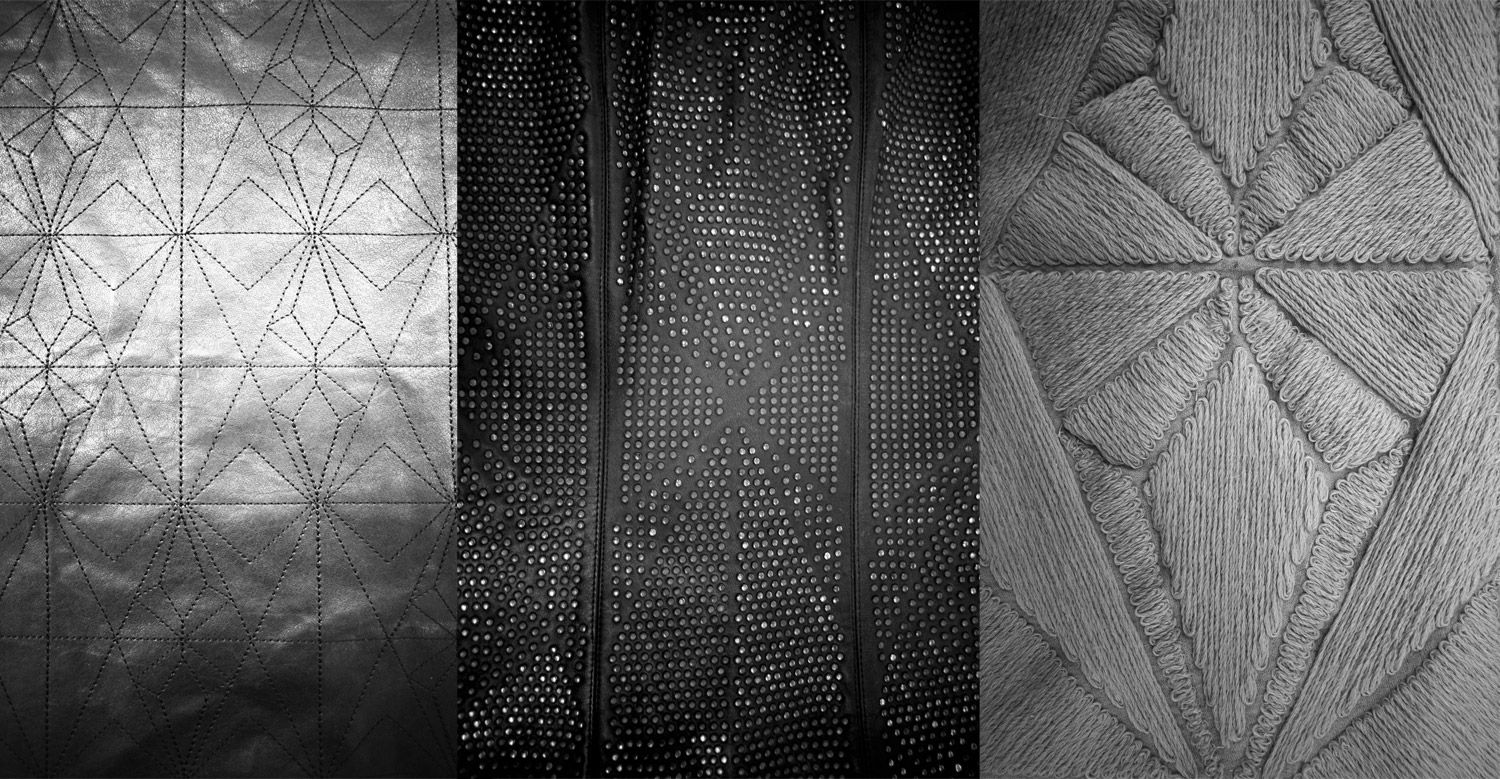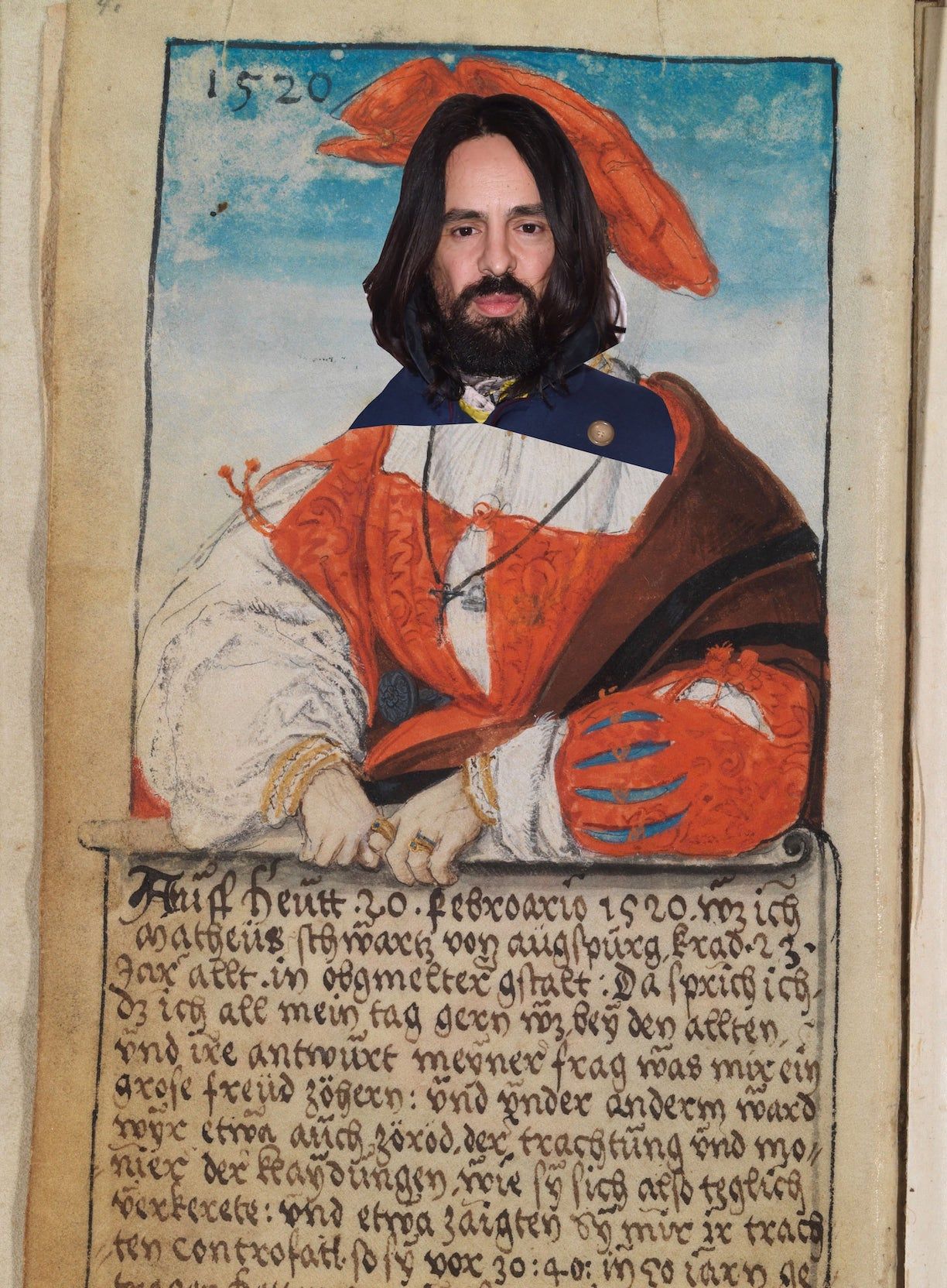“The Bigger the Risk, the Bigger the Reward”: JUERGEN TELLER’s Reasons to Enjoy Your Life
|Katja Horvat

I first met Juergen Teller the day after the opening of “Zittern auf dem Sofa,” the photographer’s soccer-themed exhibition at the Garage Museum of Contemporary Art in Moscow, which took place during the 2018 World Cup. We hit it off, and he introduced me to images from his ongoing “Enjoy Your Life!” series. We agreed to talk again as soon as possible – and record the outcome. Many hear the title “Enjoy Your Life!” and perceive something cynical in it – but the title is entirely deadpan. It’s an unguarded imperative: a reflection on the events that shaped Teller’s life – his youth, his father’s suicide, making the journey to London, and the career that followed.
“Enjoy Your Life!” has been shown in many cities, but the present edition at the Fotomuseum in Winterthur, Switzerland, which closes on October 7, carries some of Teller’s most recent and most personal work. It begins with his latest series, “Self-reflections, Melancholy and Blood Oranges” from spring 2018, then takes a thematic journey through a video he made with English actress Charlotte Rampling, “Louis XV” (2004), to “Frogs and Plates” (2016), inspired by a Robert Mapplethorpe show Teller curated at the Alison Jacques Gallery in London, and on to my favorite series, “Irene im Wald” (2012), often described as Teller’s love-letter to his mother and the forest near his childhood home in Bubenreuth, Bavaria.
With each new city the exhibition changes, just as Teller changes, and seasons pass. I recently sat down with Teller a second time – and began by asking if he’d ever considered giving up.

Katja Horvat: Did you ever think about quitting photography and going back to where it all started – to bridge-making? [Teller’s family business was manufacturing parts for musical instruments.]
I was very disillusioned with photography at points, but I never seriously thought of giving up. Even if I did quit photography, I definitely wouldn’t go back to bridge-making. It’s hard work – I didn’t enjoy it at all! As it happened, there was always some sort of a natural break where I did other things. I had a column in Die Zeit, for example, which I wrote for a year and a half. But then there was always some sort of trigger that made me excited about photography again.
How did it feel to photograph your mother for “Irene im Wald (2012)”? Is it harder to photograph someone you love?
Very much so. It’s always hardest to photograph your loved ones. With my mother, it was very difficult in the beginning. It took me years to get her in front of the camera, mainly because she doesn’t take me seriously regarding photographing her. She still thinks I’m her little guy. She’s also rather shy. At first, she didn’t want me to come close to her with a camera. She’d always announce the end of the shoot, saying I had the photo already, when in reality I had only just started taking them.
But you know, for somebody who worked in a factory all her life and has had minimal contact with culture, it’s difficult to understand what I am actually doing. I am “someone” for her when she sees me in a trashy magazine – next to Elton John or some other random celebrity. When I sold “Irene im Wald” to the Pompidou Centre, I remember calling her, so excited someone like them bought the whole series . . . I mean, they have one of the best photography collections in the world. Anyhow, I called her and she said “Why would someone want to have that?” She couldn’t wrap her head around the fact that someone would actually enjoy and want to own photos of her.
But she photographs well! She oozes warmth, even when her head is stuck in a crocodile jaw.
She created that photograph. She once called me just to tell me that her neighbor had a stuffed crocodile and a stuffed polar bear in his house. She knew I would be into it, so she set up a visit. We went there and it was terrific. She was totally into it too, and she ended up goofing around, sticking her head in the crocodile’s jaw. Working together, I actually found out she has a really great, and rather unique sense of humor.
And she still drives you around occasionally, right?
The academy where I teach is 30 minutes away from where I grew up, so I stay at her place and she drives me to work, yes. And every single time we argue about her driving, and I think to myself – next time I’m staying at a hotel. But all these years later that has yet to happen.
Are you an only child?
I am, yes. When she gets asked how things are with me, and whether she has more children, she always says, “Do you think I could handle another one like him!?”

How did the title for the “Enjoy Your Life!” show come about?
So, the title is based on a photograph I took in Africa. It was a photograph of an advert for some rather disgusting furniture, pinned to a fence. The advert said, “Enjoy your life,” and I found the whole juxtaposition so contradictory yet so true to life. The photo also made me think of my dad, who killed himself in 1998. I was 24 at the time and it had a huge impact on me. On seeing the ad where it was, I started to ask myself, what went wrong for him? What kind of chances did he have? What kind of choices did he make?
After something like the suicide of a parent, you have a responsibility to think about your own life. It’s so easy to get lost and spiral, but if you don’t want to go down the same road you have to take action and do something positive, take risks and change your life for the better. A lot of people feel more secure to just complain. They are afraid of change. But after my father’s death I decided I wouldn’t be one of those people. A lot of people read “Enjoy Your Life!” cynically, but in reality it’s not cynical at all. I mean it in the most profound way.
When you put yourself front and center in your work, does doing that serve as a sort of catalyst for whatever you are going through at the time?
I guess when things genuinely mean something to me, I tend to do that, yes. But also, when I’m the subject I can work more rigorously than with anyone else.
There was a defining moment when I started to become successful and I was asked to photograph celebrities. I got a bit tired. I didn’t want to deal with that much vanity. I was hired to photograph a French actress. The shoot had gone incredibly well – I was really excited. She pushed super hard and it was an enjoyable experience, so when the shoot was over I promised her I’d come back to Paris to show her the images. I showed her everything and the meeting lasted all of five minutes. She looked at the photos and said: “Oh my god, I look ten years older!” And I thought: “Oh my god, she thinks she’s ten years younger!” Eventually we found a couple of pictures we both agreed on and I left the meeting terribly depressed. I didn’t want to go back to London, so I stayed. I called up Charlotte Rampling, told her about the fiasco over dinner. She helped me understand the situation better.
I love you and Charlotte together. I also love that the piano series is part of “Enjoy Your Life!”
I’ve worked with Charlotte on many occasions, but that series started when Marc Jacobs asking me to help him get her in his campaign. I told him to forget it. There’s no way she’ll endorse a brand – she’s just not one of those people. But then I started to think about ways to convince her. I began to think about interesting ways to do this and not make her stand there with a stupid handbag. I thought about self-portraits, and of the two of us together. She loved the idea – so we did it. And for this shoot in particular I wanted to go back to a rich Helmut Newton-looking hotel room vibe. But I must admit, I didn’t think the whole thing through – especially the clothing part. The clothes came in a day prior to the shoot. I look at everything. I try things on and obviously nothing fits me as they send out sample sizes. Thankfully I ended up fitting into one pair of shorts. We did the shoot and the whole thing looked very intimate, like a relationship between a middle-aged guy and an older, brilliant woman, and the shoot had a lot of impact.

Do you ever think how lucky you are to have met so many amazing people and had so many remarkable experiences?
No.
Are you sure?
I push my luck! Everything that happens or has happened comes from my own hard work. It’s not like I do nothing and wait for things to happen. I am a workaholic and I take everything very seriously. A lot of photographers say how lucky I am while they do nothing and just wait for commissions. I don’t do that! If there are no shows, no books, no commission, no magazines, I do my own thing. I always work. I take risks. Like coming to London. I came in 1986, solely because I did not want to join the army. London was not cool at the time. I couldn’t speak any English. All I could say was, “This is red” or “The sky is blue” in a very harsh German accent.
Which brings us back to my dad, and examining my choices. I could easily have ended up a drug addict or an alcoholic – feeling sorry for myself. But I took the chance knowing how risky it was and how I could completely fuck everything up. The bigger the risk, the bigger the reward. What a lot of people lack is comfort with the unknown. We have to deal with our insecurities. I never hide mine. I always follow my instincts and do what feels right. The beginning of my career was rough. I often didn’t earn much. I didn’t do massive commercial projects. I didn’t move to New York where everything was at the time – but in the long run, it all worked out rather well.
Juergen Teller’s exhibition “Enjoy Your Life!” is at the Fotomuseum in Winterthur, Switzerland, until Sunday, October 7.
Credits
- Text: Katja Horvat

